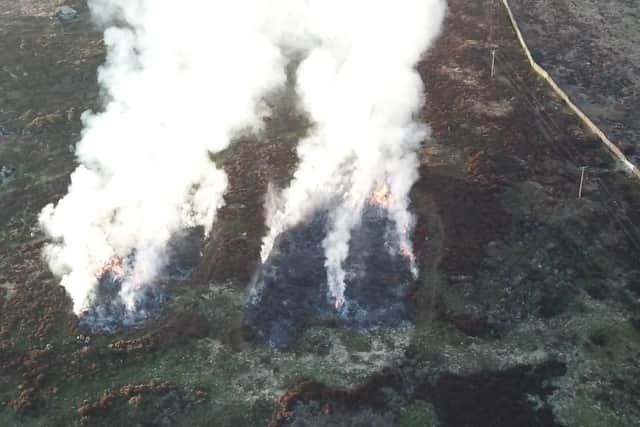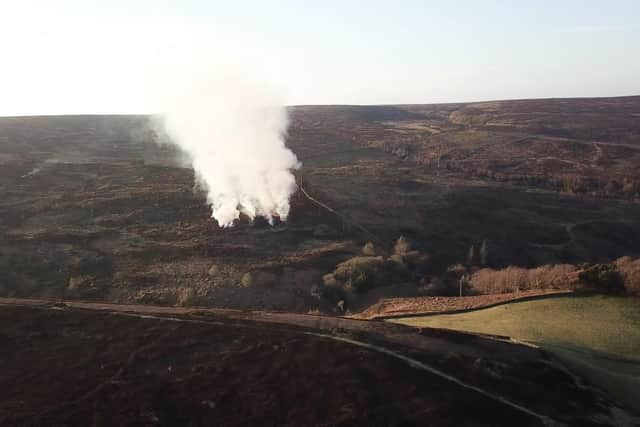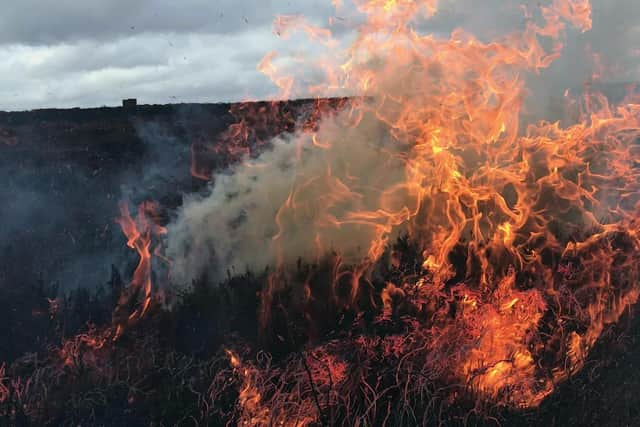109 grouse moor fires in Sheffield 'fan flames' of climate change Wild Moors campaigners claim
and live on Freeview channel 276
Between October 2021 and April 2022, there were a total of 155 reported incidents of grouse moor fires in South Yorkshire, according to Wild Moors which claims it ‘fans the flames of climate change’.
It has joined the RSPB and Greenpeace UK to call for a ban on the practice.
Advertisement
Hide AdAdvertisement
Hide AdMoorland is burned in patches to produce heather shoots for game birds to eat. The Moorland Association says it is good for the environment, boosts biodiversity and prevents flooding.


But a growing number of large organisations and landowners are turning against the practice including Yorkshire Water, United Utilities and 14 local authorities: Sheffield, Barnsley, Blackburn, Bradford, Calderdale, Doncaster, High Peak, Kirklees, Lancaster, Leeds, Redcar, Staffordshire Moorlands, Wakefield and York.
Luke Steele, executive director of Wild Moors, said the new burning figures showed ‘the appalling scale of fires on grouse moors in South Yorkshire nature sites’.
He added: “Grouse moors continue to fan the flames of climate change by setting the nation’s carbon-rich peatlands ablaze, despite the government’s climate advisers urging that every last peatland needs to be restored to protect these important ecosystems from collapse.
Advertisement
Hide AdAdvertisement
Hide Ad

“By allowing grouse moor burning to continue in any capacity, the government is not only permitting peatlands to be damaged, but also giving space for the existing rules, as shortcoming as they are, to be broken.”
BUSINESS NEWS: Sad pictures inside John Lewis
The RSPB and Greenpeace are calling for a blanket ban on burning on all peat.
Patrick Thompson, senior policy officer at RSPB UK, told the BBC: "Intensive and damaging land management practices such as burning continue to harm and further threaten these vital carbon and nature-rich ecosystems.”


Rebecca Newsom, head of politics at Greenpeace UK, added: “Why on earth is the government allowing grouse moor owners to turn swathes of national parks and protected sites into charred wasteland for the private gain of a few landowners?”
Advertisement
Hide AdAdvertisement
Hide AdAn estimated 80 per cent of the UK's peatlands are in a damaged and deteriorating condition because of present and past land management activities including drainage, peat cutting, and fire, according to the International Union for the Conservation of Nature.
Amanda Anderson, director of the Moorland Association said the overwhelming majority of controlled burns complied with legislation.


She added: “It is important to note that the Fire & Rescue Service in England supports controlled burning on moorland for the prevention of wildfire, the single most serious threat to the carbon store, as wildfire ignites the underlying peat.
“Controlled burning within the specified season is supported by government and by those who are up to speed with the latest science on peatland protection.
Advertisement
Hide AdAdvertisement
Hide Ad“Only the tips of the older, woody, vegetation are burnt off and the peat underneath is left unaffected. The most up to date science shows that not only does controlled burning not cause any damage to peatland, it may have a positive effect on carbon capture over the medium to long term.”
